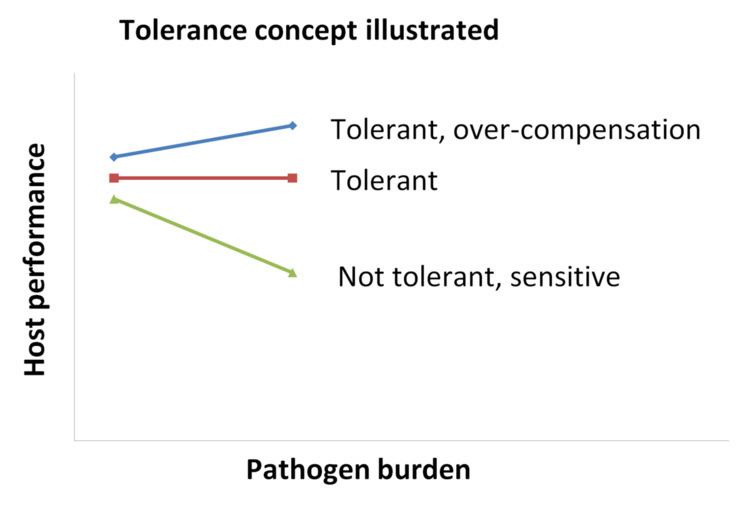 | ||
Tolerance to infections, or disease tolerance, is one of the mechanisms host organisms can fight against parasites, pathogens or herbivores that attack the host. Tolerance to infections is defined as the ability of a host to limit the impact of parasites, pathogens or herbivores on host health, performance, and ultimately on fitness. Tolerance is not equivalent to resistance. Disease resistance is the host trait that prevents infection or reduces the number of pathogens, parasites and herbivores within or on a host.
Tolerance to infections can be illustrated as the reaction of host performance along with increasing pathogen, parasite or herbivore load. This is a reaction norm in which host performance (on y-axis) is regressed against an increasing pathogen, parasite or herbivore burden (on x-axis). The slope of the reaction norm defines the degree of tolerance. High tolerance is indicated as a flat slope, i.e., host performance is not influenced by increasing number of pathogens, parasites or herbivores. Steep downward slope indicates low tolerance; host performance is strongly reduced with increasing pathogen burden. An upward slope indicates overcompensation; a host can increase its performance with increasing pathogen burden.
In farm animal science, tolerance to infections is sometimes termed disease resilience.
